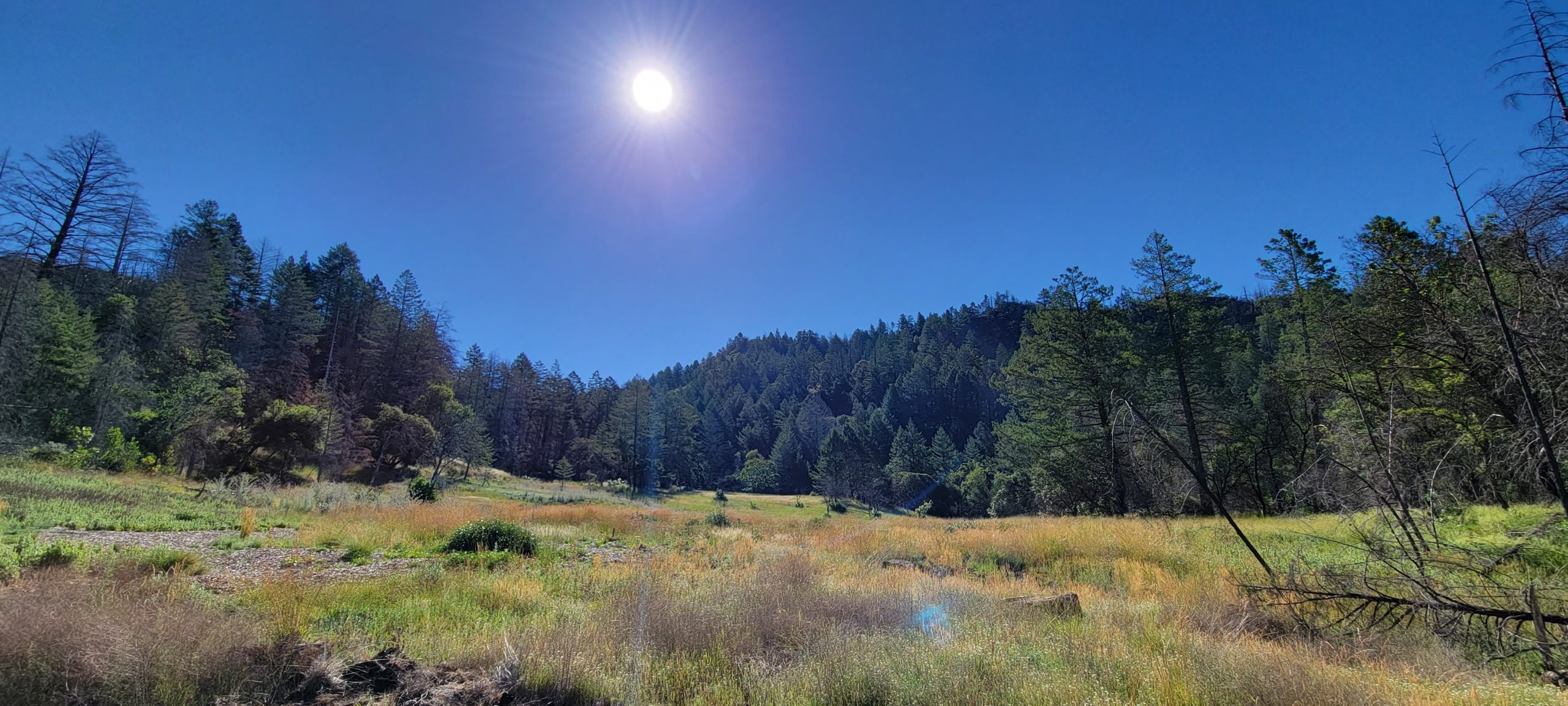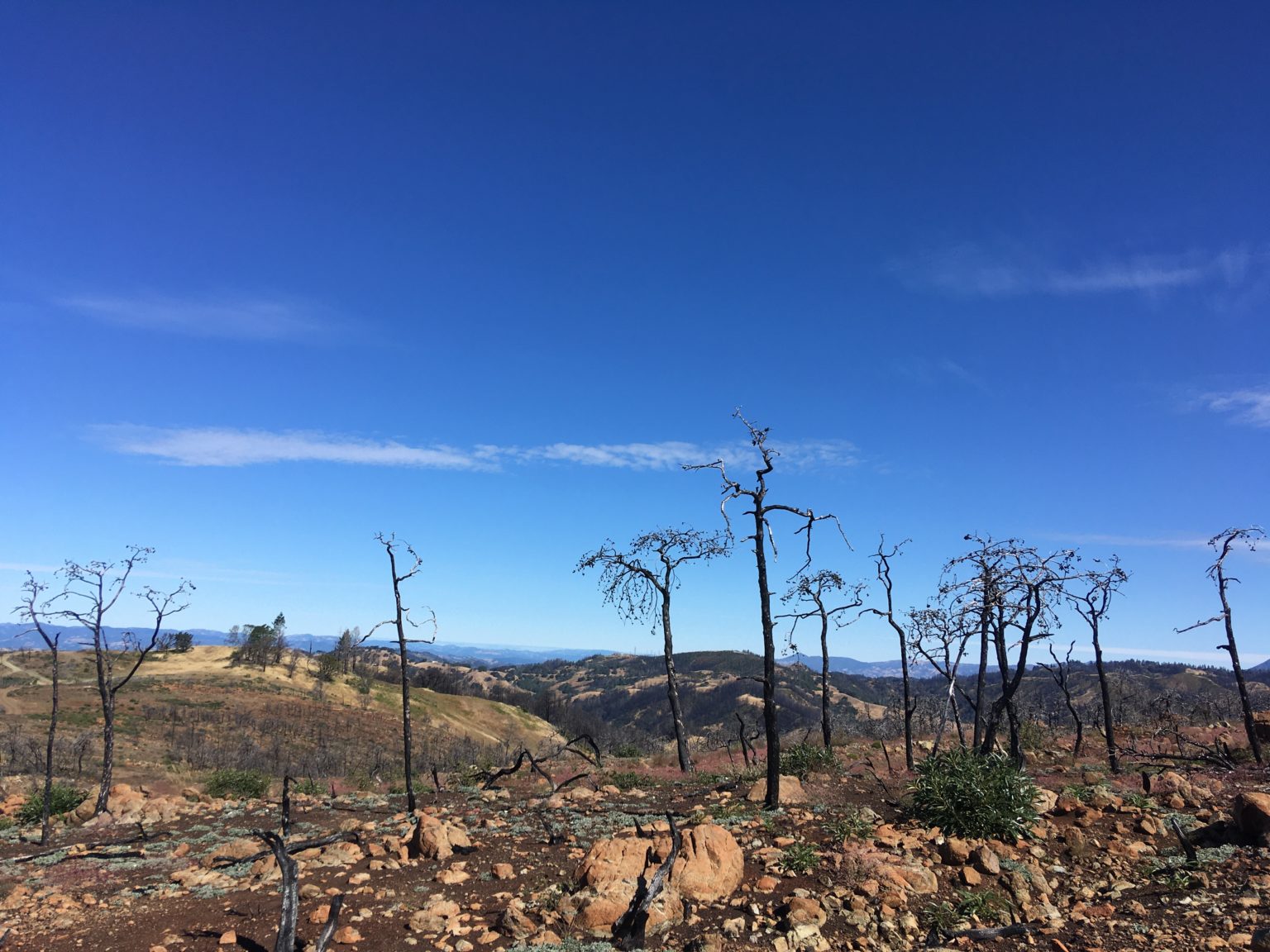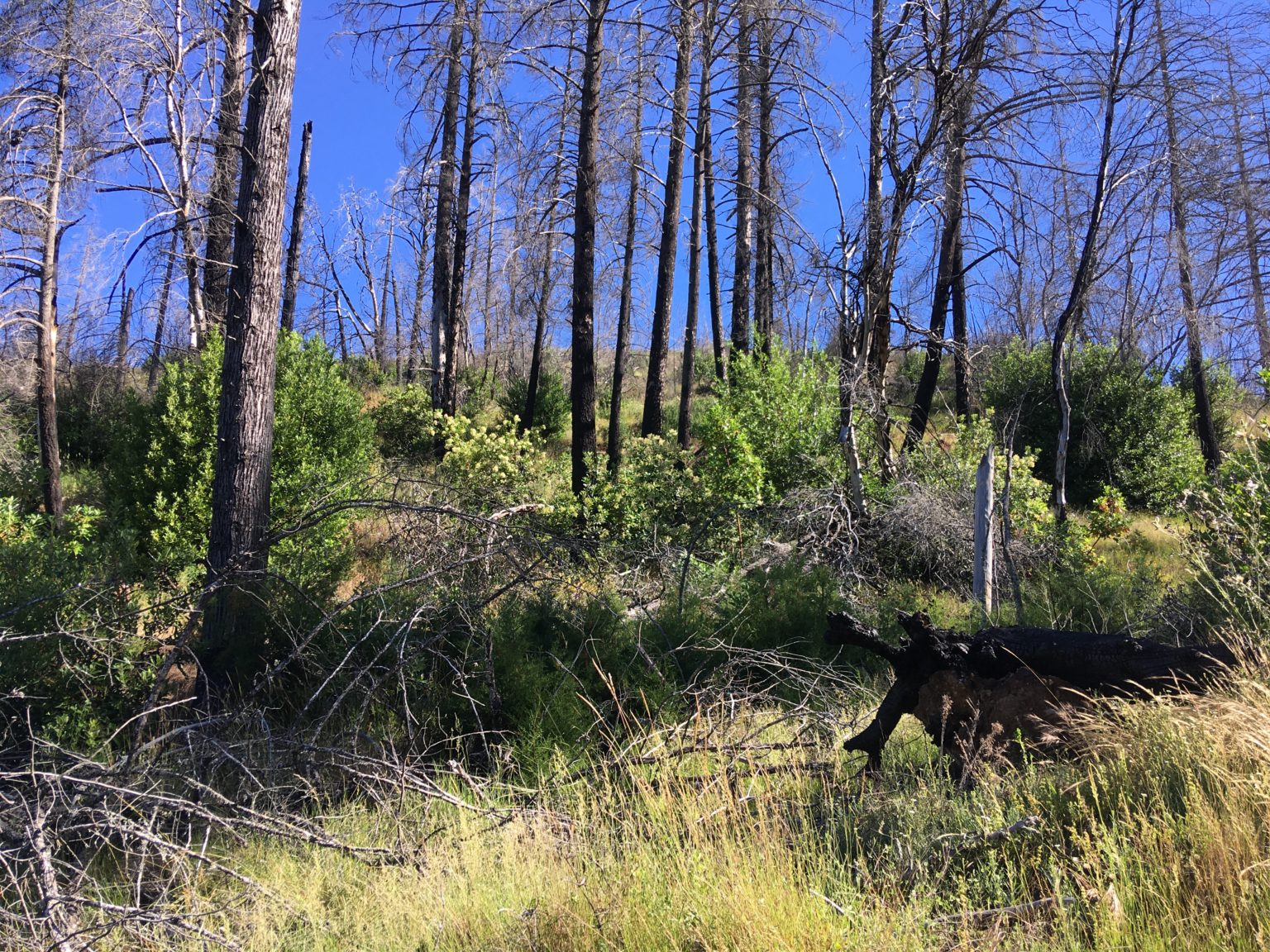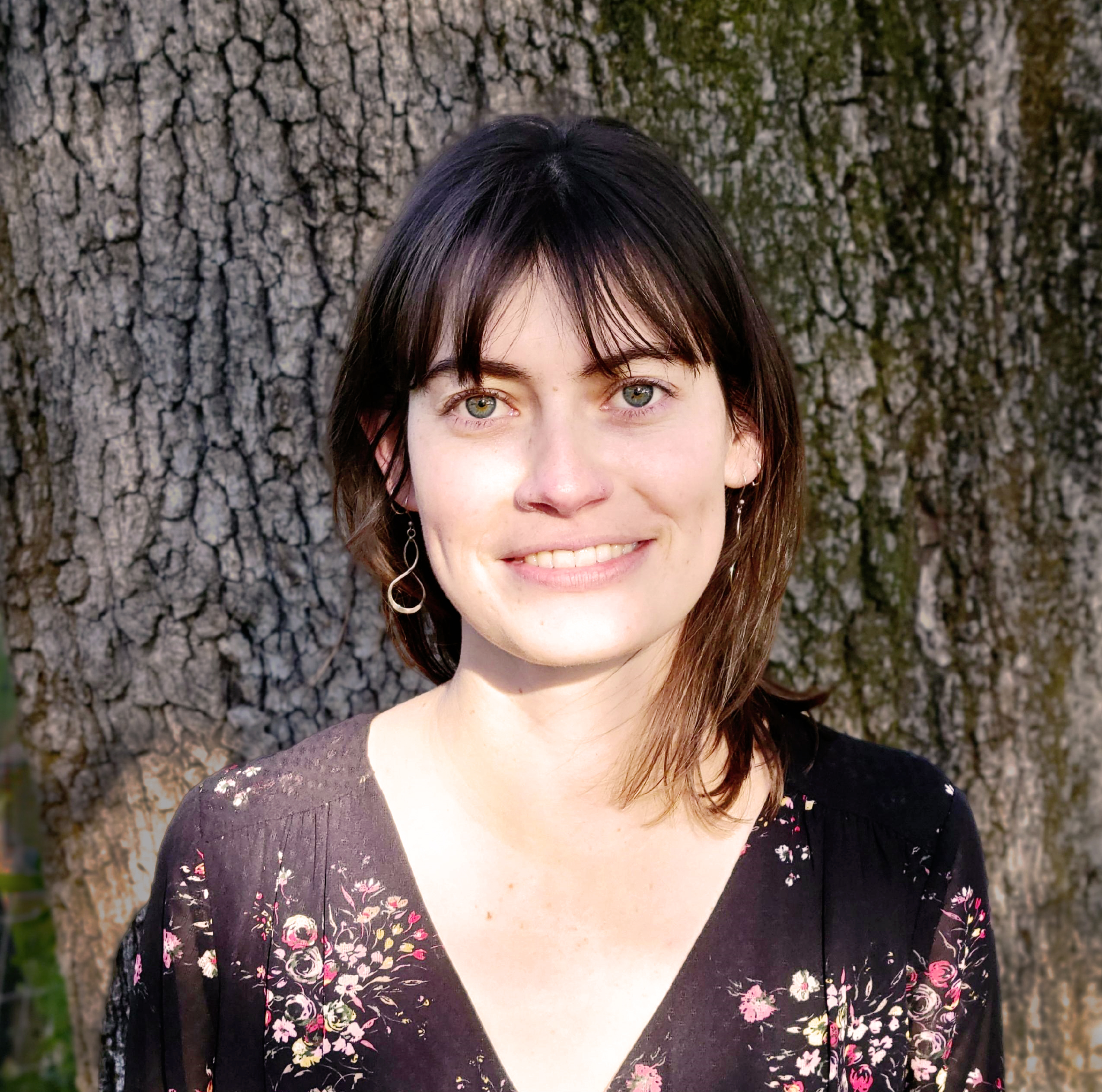When I Hike, I’d Like To See Evidence of Prescribed Burning
by Rosa Brandt, Program Associate, After the Fire USA
Back in June I spent a Saturday hiking up Hood Mountain, a 2,733-foot peak along the Sonoma Valley. The trail winds up through forests, past a small creek flowing down a canyon, and up along the ridgeline to the summit. It is a stunning hike that rewards one not only with the experience of hiking up through vast forested and grassy lands, but with an expansive view of the surrounding valleys from the summit.

The particularly interesting part of my recent hike there was seeing the evidence of wildfire across the landscape, as the park has just recently re-opened most of the trails following cleanup from wildfire damage. Approximately 80% of the 2,000-acre regional park was burned in the 2020 Glass Fire and portions of the park had previously burned in the 2017 Nuns Fire1. The trail meandered through forested areas with trees burnt to varying degrees and up into large expanses of rock and exposed soil with minimal vegetation and short, burnt but standing trees scattered about. In the more exposed burnt areas, here and there a couple of varieties of plants were thriving and leafing out, while a few species of wildflowers were popping up extensively. Ecological succession—the way that the plants, animals, and land changes over time following a disturbance, on the way back to relative stability—was on full display.
Increasing the Use of Prescribed Burning
It still strikes me as surprising to see the evidence of fire on a landscape, but that shouldn’t be the case. Ideally it would be rare to see evidence of a hot and fast burning fire that has swept across a landscape, but it should be normal to see the evidence of controlled prescribed fire on the ground. The hope is that moving forward we will reach a point where prescribed burning is a widely accepted and performed practice to reduce the risk of extreme wildfire and keep our lands healthy. We need to not only be accustomed to seeing burnt groundcover, and the stages of regrowth that follow, but to encourage it.

There are many reasons that make prescribed burning a good choice for managing our landscapes, from ecological to economical to practical. From the economic and practicality side, prescribed burning is one of the most cost-effective methods to reduce the risk of extreme wildfire. As I learned at a Rancher’s Wildfire Field Day workshop back in February, prescribed burning as vegetation management costs less when compared to vegetation removal (mechanical or by hand) or herbicide application, especially when factoring in the ecological benefits and longer-term results. On the ecological side, these California landscapes that we love often require fire to remain healthy and balanced ecosystems.
And we know that prescribed burning is a method that works. Prior to European colonization and settlement, indigenous peoples were stewards of this land, and managed vegetation for many reasons and by various methods. The landscapes we see in California today were managed for millenia by California's indigenous peoples, a very important part of which was prescribed burning.
Prescribed burning by California Indians
According to the book Tending the Wild by M. Kat Anderson, “Fire was the primary land management tool of California Indians because it had many significant ecological effects, five of which stand out as the most fundamental and compelling." 2 The author goes on to list the five: decreasing detritus and recycling nutrients, controlling insects and pathogens, managing wildlife, modifying the structure of forest and woodland vegetation, and maintaining habitat for shade-tolerant plant species.3 To focus in on the third ecological effect, modifying the structure of forest and woodland vegetation, the author explains that “In forests and woodlands, thickets of shrubs and small trees tended to accumulate over time, creating a potential wildfire hazard. Aware of the danger uncontrolled fires would pose to villages and collecting sites, California Indians regularly fired the understory in forests and woodlands ‘to keep the brush down’ and promote the growth of wildflowers and grasses. After repeated burning, the fires were of low intensity and crown fires uncommon in many areas….The Karuk in northwestern California deliberately set fires in tan oak stands to decrease the brush, which facilitated acorn collection and prevented the buildup of dangerous fuels.” 4

As for how often an area needs to be burned? It depends on the habitat type, the weather and moisture conditions, and what the desired outcome is for the area, among other factors. An area of grassland may need a different fire prescription than a forested area, for example. If we turn back to the ways of the California Indians, the author writes that, “Kroeber’s field notes…record that the Yurok of northwestern California practiced burning at a frequency that was appropriate for each cultural purpose: burning of hazelnut for basketry occurred every two years; burning under the tan oaks to keep the brush down took place every three years; burning for elk feed occurred every fourth or fifth year; burning in the redwoods for brush and downed fuel control occurred every three to five years.” 5
Looking Ahead
Returning to the discussion of prescribed burning’s value as a vegetation management tool, we can take a note from its use on these landscapes for the past many centuries prior to European settlement and the fire suppression techniques of the last many decades. We can use this as inspiration for a return to regular and extensive use of prescribed burning. “Fire was the most significant, efficient, and widely employed vegetation management tool of California Indian tribes…When they set fire to vegetation types occurring as continuous fuel beds, such as grasslands, the fire conceivably could burn uninterrupted for miles…The acreage that was burned by California’s earliest humans may have been significant; the fire scientists Robert Martin and David Sapsis estimate that between 5.6 million and 13 million acres of California burned annually under both lightning and indigenous people’s fire regimes.” 6

Will we be more accustomed to seeing evidence of prescribed burning throughout regional parks and other public areas in the coming years? I hope so. It will take a shift in perspective for many people, as fire is something that many of us instinctively fear, especially after experiencing traumatic megafires in recent years. But we can learn to see fire through another lens, as a tool, as something that can benefit both us and the landscape.
Further Reading
For more information on prescribed burning, how it is being used in Sonoma County and beyond, as well as how you can get involved, please explore these resources:
Fire Forward – From their website, “Fire Forward, a program of Audubon Canyon Ranch, collaborates with private landowners, public agencies and conservation partners on our shared purpose of effective fuels management and increased local capacity to lead prescribed burns.”
Good Fire Alliance – The Good Fire Alliance is a Prescribed Burn Association (PBA) for Sonoma and Marin Counties, “a group of private landowners and land managers in Sonoma and Marin Counties who have come together to learn how to manage the vegetation needs of their properties through controlled burning and other techniques.”
California PBA – Cal PBA is “California’s hub for community based Rx fire and Prescribed Burn Associations.” Visit their website to find your local PBA, get involved, or watch a short film about PBAs.
Notes
1 Hood Mountain Regional Park and open space preserve reopens after glass fire. Sonoma County Regional Parks. (n.d.). Retrieved July 20, 2022, from https://parks.sonomacounty.ca.gov/hood-mountain-regional-park-and-open-space-preserve-reopens-after-glass-fire
Anderson, M. Kat. Tending The Wild: Native American Knowledge and the Management of California’s Natural Resources. University of California Press, 2005.
2 Anderson, 144
3 Anderson, 144-152
4 Anderson, 151
5 Anderson, 126
6 Anderson, 136

